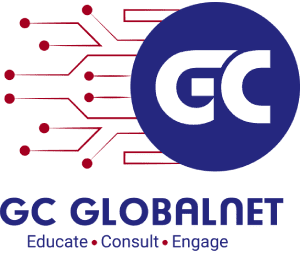Twitter Feed
NCOIC Discusses e-Discovery and Cloud Computing
Last week during its weekly meeting, the NCOIC Cloud Computing Working Group (CCWG) examined some of the legal aspects surrounding electronically stored information. With government use of cloud computing expected…
Take the survey, get a book!
“Cloud Musings”, in cooperation with Aditya Yadav & Associates, is conducting a new cloud computing survey. This short, eight (8) question poll, is designed to gauge general corporate plans around…
Army Knowledge Leaders Study Cloud Computing
This week it was my pleasure to explore cloud computing with Army Knowledge Leaders (AKL) ! AKL is an intensive 2 year experience of training and work rotations designed to develop leadership,…
Northrop Grumman & Lockheed Martin Selected for CANES
Last week the US Navy awarded initial CANES contracts to Northrop Grumman and Lockheed Martin. Navy officials place the contract values at $775M for Northrop and $937M for Lockheed.…
NCOIC Analyses Cloud Computing With SCOPE
Last week, the Network Centric Operations Consortium (NCOIC) Cloud Computing Working Group (CCWG) started it’s work on cloud interoperability in earnest. The first step in their process is the completion…
TASER Awarded: The NGA ASP/ISP Transition Contract
The National Geospatial-Intelligence Agency (NGA) has awarded the Total Application Services for Enterprise Requirements (TASER) contract to: Accenture National Security Services, LLC BAE Systems Information Technology, Inc. The Boeing Company-Autometric,…
EuroCloud Expands Quickly
Last October I introduced EuroCloud as a pan-European business network with the goal of promoting European use of cloud computing. In the intervening three months, the organization has grown to…
Joining NJVC: A Professional Plateau
This week I begin a new and exciting phase of my professional career by joining the NJVC Enterprise Management Team! For those unfamiliar, NJVC is one of the largest information…
DoD Deputy CIO on Secure Information Sharing
Today on Federal Executive Forum, Dave Wennergren, Deputy CIO, Office of the Secretary of Defense, shared his views on secure information sharing. Mr. David M. Wennergren serves as the Deputy…
Training Conference: Cloud Computing for DoD & Government
Please join me at the Cloud Computing for DoD & Government training conference, February 22-24, 2010 at the Hilton Old Town in Alexandria, VA. This unique conference agenda blends interactive…
ViON solves complex enterprise problems by combining passion and agility to deliver the most effective, innovative solutions because commitment to mission success is in their DNA. One of the ways they deliver success is through ViON on Demand™, which delivers highly secure compute, network and storage capabilities delivered through on-premise private clouds. ViON on Demand supports a customer whose business strategy is to consume IT infrastructure as a managed service. Through ViON on Demand, ViON’s customer can procure and consume a range of IT hardware and software suited to their specific needs (compute, storage, data center networking). This strategy helps them:
- Use technology on-premise, like private Cloud;
- Customize technology, vendor and configuration based on specific needs;
- Scale up and down to meet demand without penalty or minimums;
- Pay with operations dollars rather than capital expenditure;
- Achieve best-practice, customized service-level agreements (SLAs); and
- Enjoy 24/7 live, secure support when needed.
The executive responsible for managing this business is Rob Davies, Vice President ViON on Demand. I had the opportunity to meet him at the ViON headquarters building in Herndon, Virginia for a discussion on government cloud computing.
constricted environment for quite a few years but that environment is actually good for cloud computing because it has forced agencies into looking for better ways to do information technology. Here at ViON, we’ve actually benefitted from that.

Kevin:Are you arguing for changes in government procurement rules?
( This content is being syndicated through multiple channels. The opinions expressed are solely those of the author and do not represent the views of GovCloud Network, GovCloud Network Partners or any other corporation or organization.)
( Thank you. If you enjoyed this article, get free updates by email or RSS – © Copyright Kevin L. Jackson 2015)
Cloud Computing
- CPUcoin Expands CPU/GPU Power Sharing with Cudo Ventures Enterprise Network Partnership
- CPUcoin Expands CPU/GPU Power Sharing with Cudo Ventures Enterprise Network Partnership
- Route1 Announces Q2 2019 Financial Results
- CPUcoin Expands CPU/GPU Power Sharing with Cudo Ventures Enterprise Network Partnership
- ChannelAdvisor to Present at the D.A. Davidson 18th Annual Technology Conference
Cybersecurity
- Route1 Announces Q2 2019 Financial Results
- FIRST US BANCSHARES, INC. DECLARES CASH DIVIDEND
- Business Continuity Management Planning Solution Market is Expected to Grow ~ US$ 1.6 Bn by the end of 2029 - PMR
- Atos delivers Quantum-Learning-as-a-Service to Xofia to enable artificial intelligence solutions
- New Ares IoT Botnet discovered on Android OS based Set-Top Boxes


